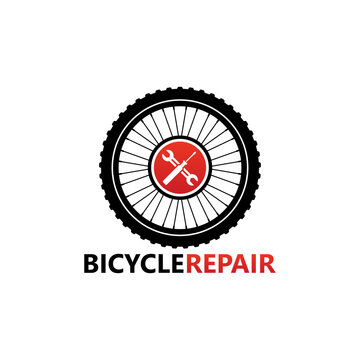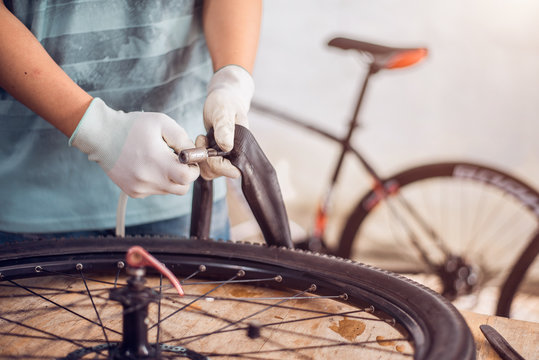Cleaning and Care
Proper cleaning and care are essential for maintaining the optimal performance and longevity of your e-bike. Regular maintenance not only ensures a smooth and enjoyable riding experience but also helps prevent costly repairs down the line. In this section, we will explore the importance of cleaning your e-bike and provide step-by-step instructions to keep it in pristine condition.
Step 1: Gather the Cleaning Supplies
Before you begin cleaning your e-bike, gather the necessary supplies:
– Mild soap or bike-specific cleaner
– Soft sponge or brush
– Bucket of water
– Clean and dry cloth
Step 2: Rinse the Bike
Start by rinsing the bike with water to remove any loose dirt or debris. Use a gentle stream of water or a hose, making sure to avoid directly spraying water into delicate components like the motor or battery.
Step 3: Clean the Frame and Components
Dilute the mild soap or bike cleaner in the bucket of water according to the manufacturer’s instructions. Dip the sponge or brush into the soapy water and gently scrub the frame, handlebars, fork, and other components. Pay attention to hard-to-reach areas, such as the drivetrain and cassette, where dirt tends to accumulate.
Step 4: Rinse Thoroughly
After cleaning, rinse the bike thoroughly with clean water to remove any soap residue. Ensure all components are free from cleaning solution.
Step 5: Dry and Polish
Using a clean and dry cloth, carefully dry the bike to prevent water spots and corrosion. Pay special attention to areas that are prone to rust, such as metal parts and the chain. Once dry, you can optionally apply a bike-specific polish or protectant to restore the bike’s shine and provide an additional layer of protection.
Remember, regular cleaning is crucial for maintaining the longevity of your e-bike. It helps prevent dirt and grime from affecting the bike’s performance and ensures that all components function optimally.
It’s important to note that while cleaning your e-bike, you should avoid using high-pressure water or harsh chemicals, as they can damage sensitive parts. Additionally, always follow the manufacturer’s guidelines for specific cleaning instructions and any products recommended for your e-bike model.
By incorporating regular cleaning into your maintenance routine, you’ll not only keep your e-bike looking its best but also ensure its reliable performance for years to come.
Safety Checks and Inspections
To ensure a safe and smooth ride on your e-bike, it’s crucial to conduct regular safety checks and inspections. By taking a few moments to inspect your bike before each ride, you can identify any potential issues and address them promptly. Let’s explore the key components you should inspect and the steps to follow for a thorough safety check.
1. Brakes
The brakes are one of the most critical components of your e-bike[^1^]. Regularly inspect them to ensure they are in good working condition. Here’s what you need to do:
1. Squeeze the brake levers and check for responsive braking.
2. Look for any signs of wear or damage on the brake pads.
3. Ensure the brake cables are properly tensioned and free from fraying.
2. Tires
Proper tire maintenance is essential for a safe and comfortable ride. Follow these steps to inspect your e-bike tires:
1. Check the tire pressure using a gauge and inflate them to the recommended level.
2. Inspect the tires for any signs of wear, cuts, or punctures.
3. Ensure the tires are properly seated on the rims and that there are no bulges or deformations.
3. Lights and Reflectors
Visibility is crucial, especially when riding in low-light conditions or at night. Take the following steps to ensure your lights and reflectors are functioning correctly:
1. Test all the lights, including the front and rear lights, as well as the brake lights.
2. Check the reflectors to ensure they are clean, securely attached, and visible from all angles.
4. Drivetrain and Chain
A well-maintained drivetrain and chain contribute to smoother and more efficient rides. Here’s how to inspect them:
1. Check the chain for proper tension and lubrication. Look for any signs of rust or excessive wear.
2. Inspect the gears and derailleurs for any misalignment or damage.
5. Frame and Components
Lastly, inspect the overall condition of the frame and other components of your e-bike:
1. Look for any cracks, dents, or signs of damage on the frame.
2. Ensure all bolts and fasteners are properly tightened and secure.
3. Check the suspension, if applicable, for smooth operation and any signs of leakage.
By performing these safety checks and inspections regularly, you can identify and address any potential issues before they compromise your safety or lead to more significant problems[^4^]. Remember, if you notice any significant issues or are unsure about the condition of certain components, it’s always best to consult a qualified bike mechanic for assistance.
Now that we have covered the importance of safety checks and inspections, let’s move on to the next section and discuss the crucial aspect of lubrication and chain maintenance for your e-bike.
[^1^]: PeopleForBikes – Noa Banayan
[^4^]: REI – Intro to Electric Bike Maintenance
Lubrication and Chain Maintenance
Proper lubrication and chain maintenance are essential for the smooth operation and longevity of your e-bike. Regularly lubricating the chain and keeping it clean helps reduce friction, prevent wear, and maintain optimal performance. In this section, we will delve into the importance of lubrication and provide step-by-step instructions to effectively maintain your e-bike’s chain.
Why Lubrication Matters
Lubricating your e-bike’s chain is crucial for several reasons[^3^]:
– Reduced friction: Lubrication minimizes friction between the chain and the drivetrain components, allowing for smoother pedaling and more efficient power transfer.
– Prevention of wear: Proper lubrication helps protect the chain from excessive wear and elongation, prolonging its lifespan.
– Corrosion prevention: Lubricants create a protective barrier that helps prevent rust and corrosion, especially in wet or humid conditions.
– Quieter operation: A well-lubricated chain produces less noise, contributing to a quieter and more enjoyable ride.
Step-by-Step Chain Maintenance
Follow these steps to effectively maintain your e-bike’s chain:
Cleaning: Start by cleaning the chain to remove any dirt, grime, or old lubricant residue. You can use a chain cleaner tool or a brush with degreaser to thoroughly clean the chain. Be sure to follow the manufacturer’s instructions for any cleaning products used^2^.
Drying: After cleaning, ensure the chain is completely dry before applying new lubricant. You can use a clean cloth or air blower to remove any excess moisture.
Choosing the right lubricant: Select a bike-specific lubricant suitable for your riding conditions. Wet lubricants are ideal for rainy or wet environments, while dry lubricants work well in dry and dusty conditions. Apply the lubricant sparingly, focusing on the inner side of the chain while rotating the pedals backward.
Wiping off excess lubricant: After applying the lubricant, use a clean cloth to wipe off any excess. This prevents the accumulation of dirt and debris on the chain.
Allowing the lubricant to penetrate: Allow the lubricant to penetrate the chain by letting it sit for a few minutes. This ensures optimal lubrication throughout the chain’s links and rollers.
Checking chain tension: While maintaining proper lubrication, it’s essential to monitor the chain’s tension. A loose or overly tight chain can affect the bike’s performance and accelerate wear. Refer to your e-bike’s user manual for instructions on adjusting the chain tension.
Remember, the frequency of chain lubrication depends on various factors such as riding conditions, weather, and mileage. It’s generally recommended to lubricate the chain every 100-200 miles or as needed[^3^]. However, if you frequently ride in adverse conditions or notice signs of excessive wear, more frequent lubrication may be necessary.
By following these steps and incorporating regular chain maintenance into your routine, you can ensure a smoother, quieter, and more efficient ride on your e-bike.
Now that we have covered the importance of lubrication and chain maintenance, let’s move on to the next section and explore the comprehensive care required for your e-bike’s battery and electrical components.
^2^: BikeRadar – Electric bike maintenance
[^3^]: Shareable – Five Crucial but Easy Bike Maintenance Tips
Battery and Electrical Component Care
Proper care and maintenance of your e-bike’s battery and electrical components are essential to ensure optimal performance and longevity. In this section, we will discuss the key aspects of battery care, software updates, and general electrical component maintenance.
Battery Care
The battery is the heart of your e-bike, providing the necessary power for an electric-assisted ride. Here are some important considerations for battery care:
Charging: Follow the manufacturer’s guidelines for charging your e-bike’s battery. It’s advisable to use the provided charger and avoid using incompatible chargers, as they can damage the battery. Additionally, avoid overcharging the battery, as it can shorten its lifespan.
Storage: If you plan to store your e-bike for an extended period, ensure the battery is charged to around 50%. This helps maintain its health during storage. Store the battery in a cool, dry place, away from extreme temperatures.
Cleaning: Keep the battery clean and free from dirt or debris. Use a soft cloth to wipe the battery gently. Avoid using harsh chemicals or abrasive materials that can damage the battery’s exterior.
Avoid extreme temperatures: Extreme heat or cold can adversely affect the performance and lifespan of the battery. Avoid exposing the battery to direct sunlight or extreme cold temperatures. If you live in an area with extreme weather conditions, consult the manufacturer’s recommendations for temperature ranges.
Software Updates
Many e-bike models come with software or firmware that can be updated to enhance performance and address any bugs or issues. Here’s why software updates are important:
Improved performance: Software updates often include optimizations and improvements that can enhance your e-bike’s overall performance, such as improved efficiency or smoother power delivery.
Bug fixes: Updates can address software bugs or glitches that may affect the functionality of your e-bike. Keeping your software up to date ensures a more reliable and enjoyable riding experience.
To update the software, refer to the manufacturer’s instructions or consult a qualified bike shop if you’re unsure about the process.
General Electrical Component Maintenance
In addition to the battery, your e-bike’s electrical components play a crucial role in its operation. Here are some general maintenance tips:
Regular inspections: Routinely inspect the electrical components, such as wires, connectors, and display panels, for any signs of damage or wear. If you notice any issues, consult a qualified bike mechanic for assistance.
Cleaning: Keep the electrical components clean and free from dirt or moisture. Use a soft cloth to wipe them gently. Avoid using water or cleaning solutions directly on the electrical components.
Professional assistance: If you encounter any electrical

Tire and Brake Maintenance
Proper maintenance of your e-bike’s tires and brakes is crucial for safety and optimal performance. In this section, we will explore the importance of tire care, brake maintenance, and tips for maximizing their lifespan.
Tire Care
The tires are the only point of contact between your e-bike and the road, making their maintenance essential. Here’s what you need to know about tire care:
Regular inspections: Routinely inspect your tires for signs of wear, cuts, punctures, or embedded debris. If you notice any damage or significant wear, it’s advisable to replace the tire.
Proper inflation: Maintaining the correct tire pressure is crucial for optimal performance and safety. Refer to the manufacturer’s recommendations for the recommended tire pressure range. Use a reliable tire gauge to check the pressure regularly and inflate or deflate as necessary.
Tread depth: Adequate tread depth ensures optimal traction, especially in wet or slippery conditions. Check the tread depth periodically, and if it becomes worn beyond the recommended limit, consider replacing the tire for better grip and control.
Cleaning: Keep your tires clean by wiping them with a damp cloth regularly. This helps remove dirt, debris, and any contaminants that may affect their performance.
Brake Maintenance
The brakes are a critical safety component of your e-bike, and proper maintenance is essential to ensure reliable stopping power. Consider the following brake maintenance tips:
Regular inspections: Inspect your brakes regularly, checking the brake pads, rotors, and cables for any signs of wear or damage. Replace worn brake pads promptly to maintain optimal braking performance.
Brake pad alignment: Ensure proper alignment of the brake pads with the rim or rotor. Misaligned brake pads can lead to reduced braking efficiency and uneven wear.
Brake pad cleaning: Clean the brake pads periodically to remove any debris or residue that may affect their performance. Use a clean cloth dampened with isopropyl alcohol to wipe the brake pads gently.
Brake cable tension: Check the brake cable tension and adjust it if necessary. Proper cable tension ensures smooth and responsive braking. Consult the manufacturer’s guidelines or seek professional help if you’re unsure about adjusting the brake cable tension.
Brake system bleeding: If you have hydraulic brakes, consider periodic brake system bleeding to remove any air bubbles and maintain consistent brake performance. Refer to the manufacturer’s instructions or consult a qualified bike mechanic for assistance.
By regularly inspecting and maintaining your e-bike’s tires and brakes, you can ensure optimal safety, performance, and longevity.
Now that we have covered tire and brake maintenance, let’s move on to the next section, where we will explore additional tips for keeping your e-bike in top condition.
^3^]: [BikeRadar – Electric bike maintenance
[^4^]: REI – Intro to Electric Bike Maintenance

Professional Maintenance and Servicing
While regular maintenance and care can go a long way in keeping your e-bike in excellent condition, there are certain tasks that are best left to the professionals. In this section, we will discuss the importance of professional maintenance and servicing for your e-bike.
Qualified Bike Shop Assistance
Seeking assistance from a qualified bike shop for certain maintenance tasks can ensure that your e-bike receives the expert attention it needs. Here are some reasons why professional maintenance is beneficial:
Specialized knowledge: Bike mechanics at qualified shops have the expertise and knowledge to work specifically with e-bikes. They are familiar with the intricacies of electric components, motor systems, and battery technology, allowing them to diagnose and address issues effectively.
Efficiency and accuracy: Professional bike mechanics have the necessary tools and equipment to perform precise maintenance tasks. Their experience allows them to work efficiently, saving you time and ensuring that the job is done correctly.
Warranty considerations: If your e-bike is still under warranty, performing certain maintenance tasks yourself may void the warranty. Getting professional maintenance ensures compliance with warranty terms and conditions.
When to Seek Professional Help
While regular maintenance tasks like cleaning, tire inflation, and brake adjustments can often be done at home, certain situations call for professional assistance. Consider seeking professional help for the following:
Motor or battery issues: If you experience any problems with your e-bike’s motor or battery, it’s best to consult a qualified bike shop. They have the expertise to diagnose and fix complex electrical issues.
Software updates: While software updates can often be done by the rider, if you are unsure about the process or encounter any difficulties, a bike shop can handle the update efficiently.
Complex repairs: If your e-bike requires major repairs or component replacements, it’s advisable to leave it in the hands of professionals. They can ensure that the repairs are carried out correctly and safely.
Periodic servicing: Even if your e-bike is running smoothly, periodic servicing by a qualified bike shop is recommended. They can perform comprehensive inspections, address any potential issues, and provide valuable maintenance advice.
Remember, investing in professional maintenance and servicing can prolong the lifespan of your e-bike, enhance its performance, and ensure a safe and enjoyable riding experience.
Now that we have explored the importance of professional maintenance, let’s move on to the next section, where we will provide additional tips for e-bike maintenance and care.
^3^]: [BikeRadar – Electric bike maintenance
^4^]: [REI – Intro to Electric Bike Maintenance

Maximizing Battery Range and Longevity
The battery is a crucial component of your e-bike, and maximizing its range and longevity is essential for an optimal riding experience. In this section, we will explore tips and techniques to help you get the most out of your e-bike’s battery.
Efficient Riding Techniques
By adopting efficient riding techniques, you can extend your e-bike’s battery range. Here are some tips to consider:
Pedal-assist levels: Utilize the different pedal-assist levels available on your e-bike. Lower levels require less power and can help conserve battery life, especially on flatter terrains or when you have ample energy to contribute to the pedaling effort.
Smooth acceleration: Gradually increase your speed rather than accelerating quickly. Smooth acceleration puts less strain on the battery and allows for more efficient power usage.
Consistent pedaling: Maintain a consistent pedaling cadence, even when using the electric-assist. This helps optimize the balance between human power and electric power, allowing for more efficient energy usage.
Utilize regenerative braking: Some e-bikes are equipped with regenerative braking systems that convert the kinetic energy generated during braking into electrical energy, which is then stored in the battery. Take advantage of this feature by using the brakes appropriately and allowing the system to capture and store energy.
Battery Care and Charging
Proper care and charging habits can significantly impact the longevity and overall performance of your e-bike’s battery. Consider the following tips:
Avoid complete discharges: It’s best to avoid fully depleting your e-bike’s battery. Aim to recharge it before it reaches a critically low level, as frequent full discharges can shorten the battery’s lifespan.
Regular charging: For optimal battery health, it’s recommended to charge your e-bike’s battery regularly, even if you haven’t fully depleted it. Partial charges are generally better for battery longevity than infrequent full charges.
Storage considerations: If you plan to store your e-bike for an extended period, ensure the battery is charged to around 50% and stored in a cool, dry place. Avoid exposing the battery to extreme temperatures, as this can affect its performance and lifespan.
Charge with the manufacturer’s charger: Always use the charger provided by the manufacturer or a compatible charger recommended for your specific e-bike model. Using improper chargers can potentially damage the battery or lead to suboptimal charging.
Battery Longevity Tips
To help extend the overall lifespan of your e-bike’s battery, consider the following practices:
Avoid extreme temperatures: Exposure to extreme heat or cold can negatively impact battery performance and longevity. Try to store and operate your e-bike within the recommended temperature range provided by the manufacturer.
Regular maintenance: Proper maintenance of your e-bike, including keeping the battery and electrical connections clean and free from debris, can contribute to the longevity of the battery.
Avoid overcharging: Once your e-bike’s battery is fully charged, unplug it from the charger promptly. Overcharging can lead to unnecessary stress on the battery and may affect its overall lifespan.
By implementing these tips and techniques, you can maximize

and Further Resources
Congratulations! You are now equipped with valuable e-bike maintenance tips to keep your electric bicycle in top shape. By following these practices, you can ensure a safe, enjoyable, and long-lasting riding experience. Before we conclude, let’s recap some key points and provide you with further resources to explore.
Recap of Key Points
- Regular maintenance is essential for optimal performance, safety, and longevity of your e-bike.
- Cleaning your e-bike after each ride, conducting safety checks, lubricating the chain, checking tire pressure, and proper storage are crucial maintenance tasks.
- Tire and brake maintenance play a vital role in ensuring safety and a smooth ride. Regular inspections, proper inflation, and brake pad checks are key.
- Professional maintenance and servicing from qualified bike shops are recommended for complex repairs, motor or battery issues, and periodic servicing.
- Efficient riding techniques, proper battery care, and charging habits can maximize your e-bike’s battery range and longevity.
Explore Further
If you’re hungry for more knowledge and want to dive deeper into e-bike maintenance, here are some resources worth checking out:
- PeopleForBikes.org: Discover personal stories and the positive impact of e-bikes on health and well-being.
- Shareable.net: Learn five crucial yet easy maintenance tips to incorporate into your routine.
- BikeRadar.com: Dive into a comprehensive guide on e-bike maintenance, including cleaning, lubricating, and caring for components.
- REI.com: Explore an introductory guide to electric bike maintenance, focusing on basic tasks and additional considerations.
- CyclingNews.com: Delve into a guide on maintaining electric bikes, emphasizing cleaning, inspections, and prompt problem-solving.
Remember, regularly maintaining your e-bike not only ensures its longevity but also enhances your riding experience. Don’t forget to check out our other great articles and resources on e-bikes, cycling, and outdoor adventures.
Happy riding and safe travels!
^1^]: [PeopleForBikes.org
Questions & Answers
Who should perform regular e-bike maintenance?
Riders of e-bikes should perform regular maintenance for optimal performance.
What are some essential e-bike maintenance tasks?
Cleaning, safety checks, lubricating, and tire pressure checks are crucial maintenance tasks.
How often should I clean my e-bike?
Regularly clean your e-bike after each ride for optimal performance and longevity.
What should I do if I encounter complex e-bike issues?
Seek professional help from qualified bike shops for complex repairs and servicing.
How can I maximize the battery range of my e-bike?
Adopt efficient riding techniques and follow proper battery care and charging habits.
What if I’m not confident in performing maintenance tasks myself?
It’s always recommended to consult a professional for any doubts or concerns.
How do I store my e-bike properly?
Store your e-bike in a cool, dry place and ensure the battery is charged to around 50%.
